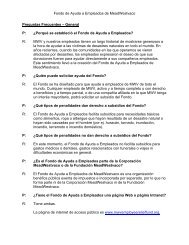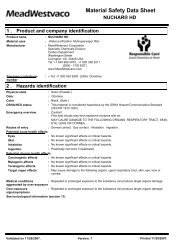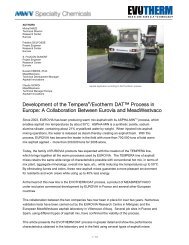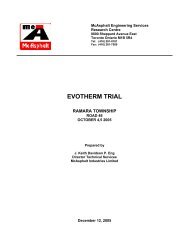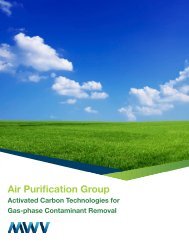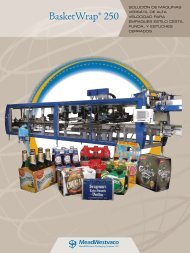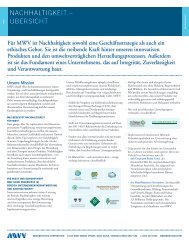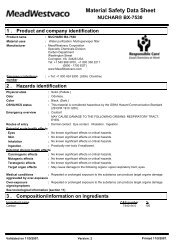NUCHAR® RGC - MeadWestvaco
NUCHAR® RGC - MeadWestvaco
NUCHAR® RGC - MeadWestvaco
Create successful ePaper yourself
Turn your PDF publications into a flip-book with our unique Google optimized e-Paper software.
3 .<br />
<strong>NUCHAR®</strong> <strong>RGC</strong><br />
Composition/information on ingredients<br />
Page: 2/6<br />
Ingredient name CAS number % by weight<br />
Carbon 7440-44-0 100<br />
4 .<br />
First aid measures<br />
Eye contact<br />
: Immediately flush eyes with plenty of water for at least 15 minutes, occasionally lifting<br />
the upper and lower eyelids. Check for and remove any contact lenses. Get medical<br />
attention if irritation occurs.<br />
Skin contact<br />
: Flush contaminated skin with plenty of water. Remove contaminated clothing and<br />
shoes. Get medical attention if irritation occurs. Wash clothing before reuse.<br />
Inhalation<br />
: Get medical attention if irritation occurs. Move exposed person to fresh air. If not<br />
breathing, if breathing is irregular or if respiratory arrest occurs, provide artificial<br />
respiration or oxygen by trained personnel. It may be dangerous to the person providing<br />
aid to give mouth-to-mouth resuscitation. If unconscious, place in recovery position and<br />
get medical attention immediately. Maintain an open airway. Loosen tight clothing such<br />
as a collar, tie, belt or waistband.<br />
Ingestion<br />
: Wash out mouth with water. Remove dentures if any. If material has been swallowed<br />
and the exposed person is conscious, give small quantities of water to drink. Stop if the<br />
exposed person feels sick as vomiting may be dangerous. Do not induce vomiting<br />
unless directed to do so by medical personnel. If vomiting occurs, the head should be<br />
kept low so that vomit does not enter the lungs. Get medical attention if irritation occurs.<br />
Never give anything by mouth to an unconscious person. If unconscious, place in<br />
recovery position and get medical attention immediately. Maintain an open airway.<br />
Loosen tight clothing such as a collar, tie, belt or waistband.<br />
Protection of first-aiders : No action shall be taken involving any personal risk or without suitable training.<br />
5 .<br />
Fire fighting measures<br />
Products of combustion<br />
Extinguishing media<br />
: Emits acrid smoke and irritating fumes when heated to decomposition.These products<br />
are carbon oxides (CO, CO2).<br />
Suitable : Use an extinguishing agent suitable for the surrounding fire.<br />
Not suitable : None known.<br />
Special exposure hazards : None.<br />
Explosive properties : No specific hazard.<br />
Special protective equipment : Fire-fighters should wear appropriate protective equipment and self-contained breathing<br />
for fire-fighters<br />
apparatus (SCBA) with a full face-piece operated in positive pressure mode.<br />
Special remarks on fire<br />
hazards<br />
: None.<br />
Special remarks on explosion:<br />
Explosibility: Class St1 (Kst = 105 bar m/s)<br />
hazards<br />
Fine dust clouds may form explosive mixtures with air.<br />
6 .<br />
Accidental release measures<br />
Personal precautions : Immediately contact emergency personnel. Keep unnecessary personnel away. Use<br />
suitable protective equipment.<br />
Environmental precautions : Avoid dispersal of spilled material and runoff and contact with soil, waterways, drains<br />
and sewers.<br />
Methods for cleaning up : If emergency personnel are unavailable, vacuum or carefully scoop up spilled material<br />
and place in an appropriate container for disposal by incineration. Avoid creating dusty<br />
conditions and prevent wind dispersal.<br />
Validated on 1/28/2009.<br />
Version: 2 Printed 1/28/2009.




